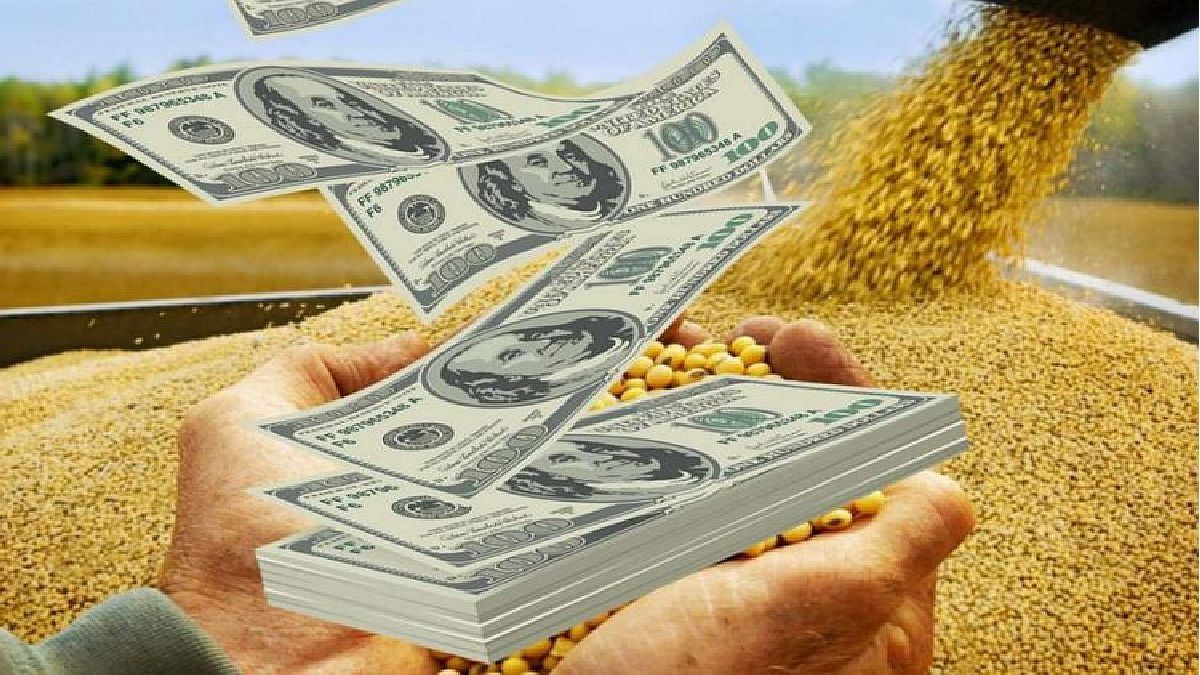The expectation of the Government is maintained and the bet is that until the end of May around US$5,000 million will enter from the sale of soybeans, through the export increase program called soybean dollar III and that establishes a differential exchange of $300 per dollar. The truth is that since its launch, last Wednesday, April 12, oilseed sales have been far from taking off, as expected by the economic team, which during the past week had to deny various rumors that circulated in the market and that ranged from an abrupt devaluation of the official exchange rate to the resignation of Economy Minister Sergio Massa.
With this scenario as a backdrop, The Government expects that this week the soybean sale will reach a higher rate than last week. Since the implementation of the so-called soy dollar III, agro-export companies have liquidated more than US$1,255 million on the exchange market and producers have sold around 1 million tons of the oilseed.
As explained by the oil industry, the biggest inconvenience that the operation is going through and that slows down the income of foreign currency, is that the drought that reduced the harvest to 22 million tons, but that is not all. Gustavo Idígoras, president of CIARA-CEC, explained that other factors that hinder soybean exports are the “restless exchange market” and “the price”, about which -he explained- “the producer had expectations that it would be higher to try to alleviate some of the consequences of the drought and you are not seeing it because the factories are not in a position to pay for it because the exchange rate does not exceed $300”.
More concretely agricultural producers expected to receive no less than $120,000 per ton of soybeans from the new season, but the truth is that exporting companies offered a maximum of $105,000 per ton. The difference is not minor and much more so in a market that was convulsed by the many rumors that arose not coincidentally from the launch of the soybean dollar.
Within this framework, the president of CIARA-CEC admitted that prior to the implementation of the agricultural dollar, in the sector they had projected “to reach 10 million tons”, but clarified that with market conditions that “have changed”, “unfortunately , 10 million tons will not be reached and it is not known what the floor will be either”. The truth is that the ruling party continues to bet on the reactivation of the soybean business starting this week since the differential exchange rate will be in force until the end of May.
regional economies
The other bet of the economic team is aimed at the differential exchange rate for the regional economies that will officially come into force at the beginning of next May. Within this framework, last week, to the activities already approved, products derived from the chains apple, pear, orange, tangerine, grapefruit, rice, kiwi, onion, and other productions with greater local relevanceas essential oils, quinoa, flax, coriander, oregano, paprika, chamomile and trees, shrubs and bushes, fruit or other edible fruits.
To enter the program, companies must have exported their merchandise at some point in the 18 months immediately prior to its entry into force, as well as assume the commitment to maintain or increase the number of jobs. They must also commit to supplying the local market with these goods, having to maintain or increase the supply volumes registered in the 18 months prior to the validity of the Program.
Finally, they will have to comply with the Fair Prices program or the price agreements for the local market established by the Ministry of Commerce.
The first list had already included the activities winegrowing, olive growing, beekeeping, fishing, forestry, wool, legume production, garlic, tea, peanuts, tobacco, lemon, fruits such as cherries, plums and blueberries– and special products that are destined for the foreign market almost exclusively, such as popcorn, confectionery sunflower and products that are ecological, biological or organic.
The official estimate is that they would enter around US$4,000 million until the end of August, in a context in which the supply and internal prices will also be guaranteed.
Source: Ambito




